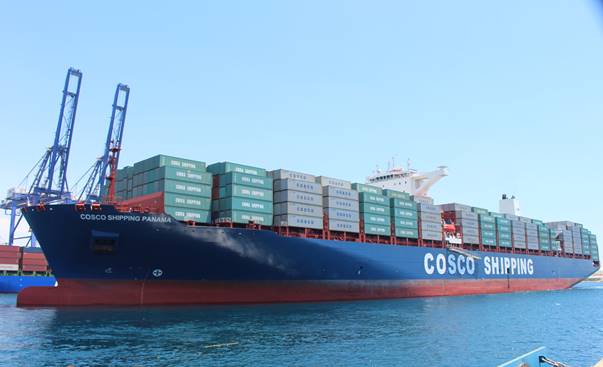SMU Community Chat

Anton: Slow U-shaped Recovery in the Forecast
Written by Sandy Williams
May 21, 2020
Neither rosy nor the voice of doom, IHS Markit analyst John Anton offered a realistic assessment of the U.S. economic recovery post-COVID-19 during Wednesday’s SMU Community Chat Webinar.
Recovery from the current recession will not be a quick V-shaped rebound, said Anton, who is associate director of IHS Markit’s Pricing and Purchasing Service. Instead, he described it as a “prolonged U.”
“We are in a deep recession and growing out of it—but when you fall into the Grand Canyon it takes a while to climb back out. If you fall 40 percent and grow 10 percent per year, it still takes four years to get back. Some things don’t get back for a long time. It’s not good news, but we consider it to be realistic news.”
Steel industry demand collapsed in March and April and has now passed the bottom in May. Anton suggests looking to 2009 as a guide to demand. Business conditions are improving, and will continue to do so, but it will not be huge or fast. Reopening of automotive and other manufacturing will cause demand to rise, but will not be near 2019 levels, he said.
Anton noted that steel mills did a good job of cutting production to match demand. Shortages are a concern as demand improves, but may be milder than expected. Prices are rising, but will be constrained by lack of demand.
Furnaces can be returned to operation relatively quickly and there will be a series of pricing spikes as capacity comes back online. There can be small increases to price and volume, but not large changes to either, or price increases will fail, warned Anton.
Weak global steel demand along with low prices could lead to a surge in imports that U.S. producers should be wary of, said Anton. Rising U.S. steel prices could be undercut by import pricing even with shipping costs and tariffs added.
Anton expects that some of the capacity idled during the pandemic may not return due to the prolonged downturn and new capacity coming online in the next two years.
The pandemic’s impact on the services industry will undercut any hopes of a fast recovery, he said. Service industries generate 75 percent of economic demand and generally sustain the economy if manufacturing falls. The pandemic, however, took out most of the industry causing 2-3 months of lost income that will take many more months to recoup. Many consumers will not be in a financial position to buy a car in the second half of the year, take a vacation or resume regular shopping habits.
IHS Markit assumes it will take 12-18 months before a vaccine is available—a prerequisite for return to a full economy. In the interim, consumer demand will not snap quickly and will be weak for an extended period of time. It will be worse in Europe and the rest of the world, said Anton.
Steel end market recoveries will extend into 2022 and, in some cases, may not regain 2019 levels. Steel’s two largest markets, nonresidential construction and automotive, will remain weak through 2022 and under pre-recession levels
Fabricated metals and electrical machinery will see a steady improvement through 2022, but may remain below pre-COVID levels. Appliances will have a long slow recovery that may never get back to pre-pandemic levels due to weakness in construction.
The construction industry continued to work on ongoing projects during the pandemic, but new projects were postponed or canceled. The downturn will be extended and sustained in the sector, said Anton. Commercial construction will falter due to low demand as restaurants and retail stores go out of business. Infrastructure will be on hold since it is funded mostly by local and state governments that have seen revenue plummet in the first quarter as unemployment rose and funds were redirected toward COVID-19 measures. Even a new federal infrastructure bill would fail to offset the funding deficit by local and state governments, added Anton. Institutional construction will also be impacted by lack of public funding.
The oil and gas sector, already under pressure as the pandemic began, will remain depressed due to excess inventory. It will be difficult for oil prices to rally and the recovery for the industry will be slow, Anton predicted.
IHS Markit sees scrap prices trending sideways at around $225 per ton and U.S. scrap at about $325 going into 2022.
Hot rolled prices hit bottom and are on the way up, but will fall if import surges materialize. Plate recovery is expected to stay flat due to weakness in machinery and energy markets.
A possible downside risk for the economy is that it reopens too fast causing a surge in infections in the second half of the year and another shutdown. That scenario would result in a much longer W-shaped recovery. On the upside, if a vaccine is developed and administered quickly, conditions will return to normal much more rapidly.
During the Q&A, Anton was asked about supply chains and reshoring. “Reshoring is a two-edged sword,” said Anton, and not a “slam dunk risk protector.” More firms are likely to look at reshoring supply chains due to the coronavirus, but there are advantages to spreading sourcing globally. Clustering sources geographically may be safer in general, but makes it more likely that if one is disrupted others are too due to some regional issue.
Editors note: John Anton answers more questions in a separate article in tonight’s issue. Next week the SMU Community Chat Webinar will feature Barry Zekelman, chairman and CEO of Zekelman Industries. Join us on Wednesday, May 27, at 11:00 a.m ET for this free webinar. Click here to register.

Sandy Williams
Read more from Sandy WilliamsLatest in SMU Community Chat

SMU Community Chat replay now available
The latest SMU Community Chat webinar reply is now available on our website to all members. After logging in at steelmarketupdate.com, visit the community tab and look under the “previous webinars” section of the dropdown menu. All past Community Chat webinars are also available under that selection. If you need help accessing the webinar replay, or if your company […]

SMU Community Chat: Posner talks state of global logistics
While shipping and supply chains have always been subject to wars, pirates, privateers, geopolitical issues, and natural disasters, it seems that “it’s been busier lately when it comes to dealing with significant supply chain disruptions,” according to logistics expert Anton Posner.

SMU Community Chat: April 17 with AGC chief economist Ken Simonson
Ken Simonson, chief economist for The Associated General Contractors of America (AGC), will be the featured speaker on the next SMU Community Chat webinar on Wednesday, April 17, at 11 a.m. ET. The live webinar is free. A recording will be available free to SMU members. You can register here.

SMU Community Chat replay now available
The latest SMU Community Chat webinar reply is now available on our website to all members. After logging in at steelmarketupdate.com, visit the community tab and look under the “previous webinars” section of the dropdown menu. All past Community Chat webinars are also available under that selection. If you need help accessing the webinar replay, or if your company […]

SMU Community Chat: April 10 with Mercury Resources CEO Anton Posner
Mercury Resources CEO Anton Posner will be the featured speaker on SMU’s next Community Chat webinar on Wednesday, April 10, at 11 a.m. ET. The live webinar is free. You can register here. A recording of the webinar and the slide deck will be available only for SMU members.
